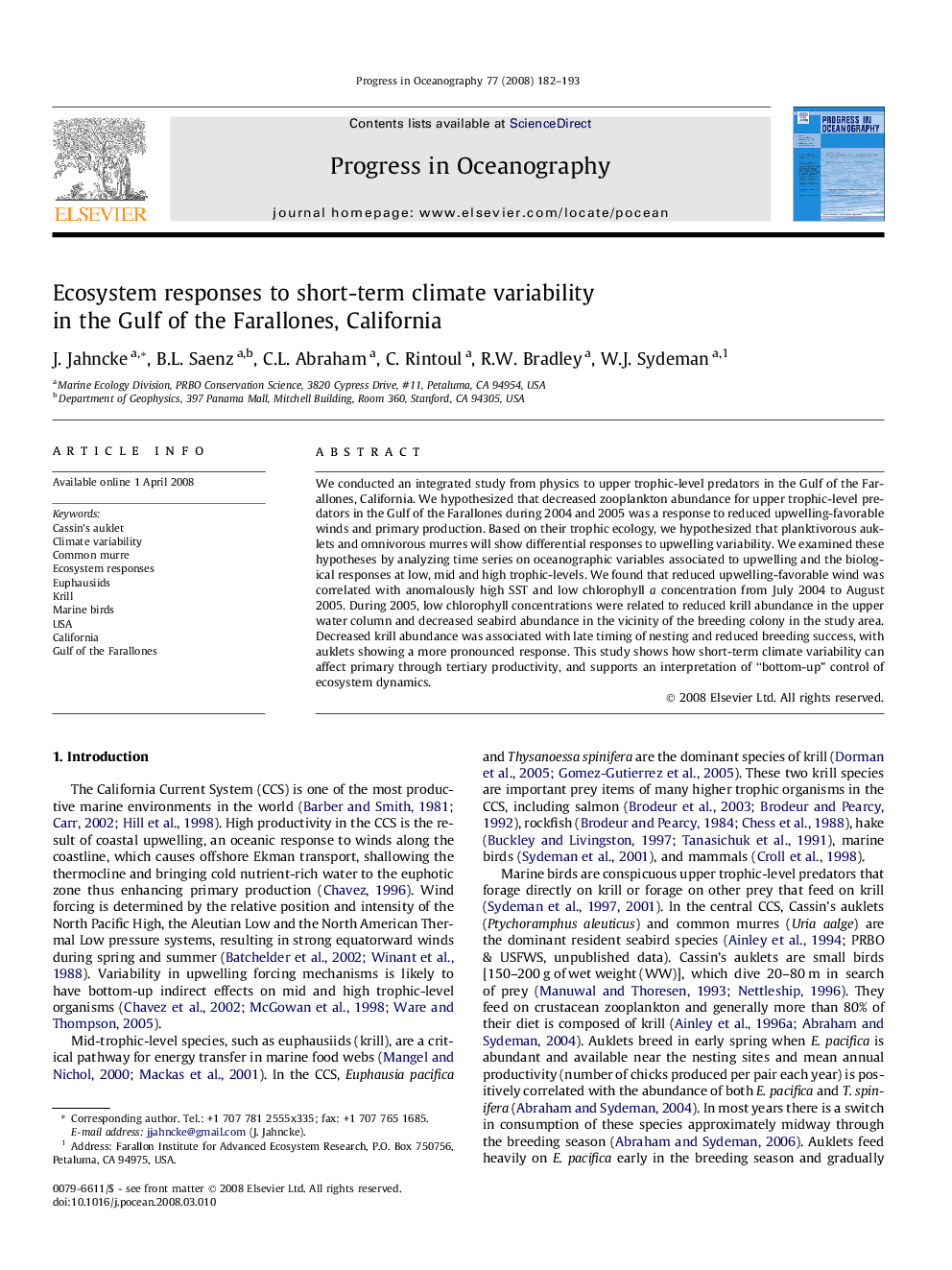| Article ID | Journal | Published Year | Pages | File Type |
|---|---|---|---|---|
| 4553751 | Progress in Oceanography | 2008 | 12 Pages |
We conducted an integrated study from physics to upper trophic-level predators in the Gulf of the Farallones, California. We hypothesized that decreased zooplankton abundance for upper trophic-level predators in the Gulf of the Farallones during 2004 and 2005 was a response to reduced upwelling-favorable winds and primary production. Based on their trophic ecology, we hypothesized that planktivorous auklets and omnivorous murres will show differential responses to upwelling variability. We examined these hypotheses by analyzing time series on oceanographic variables associated to upwelling and the biological responses at low, mid and high trophic-levels. We found that reduced upwelling-favorable wind was correlated with anomalously high SST and low chlorophyll a concentration from July 2004 to August 2005. During 2005, low chlorophyll concentrations were related to reduced krill abundance in the upper water column and decreased seabird abundance in the vicinity of the breeding colony in the study area. Decreased krill abundance was associated with late timing of nesting and reduced breeding success, with auklets showing a more pronounced response. This study shows how short-term climate variability can affect primary through tertiary productivity, and supports an interpretation of “bottom-up” control of ecosystem dynamics.
